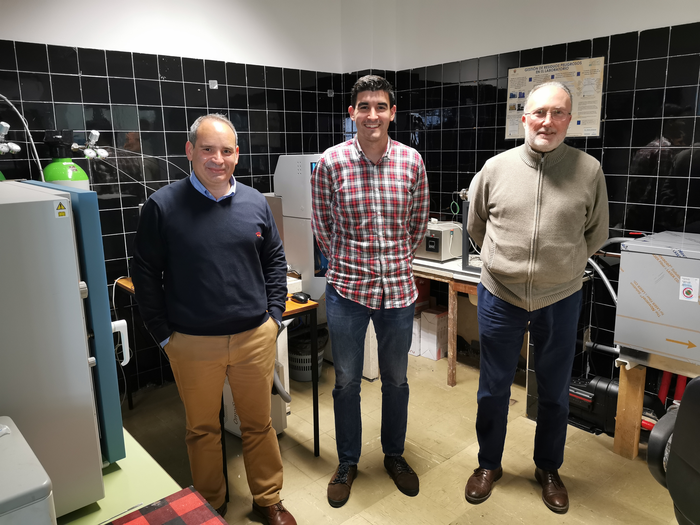The construction industry is an important source of carbon dioxide (CO2) emissions worldwide, accounting for approximately 8% of total global CO2 emissions, according to International Energy Agency figures. As a result, one of its significant environmental challenges in the future will be the emergence of various sustainable building materials and methods.
 Image of the researchers who have carried out the research. Image Credit: University of Córdoba
Image of the researchers who have carried out the research. Image Credit: University of Córdoba
A University of Cordoba research study has attempted to dose concrete using a new technique that eliminates carbon dioxide from the atmosphere and could be used to produce paving stones, curbs, vaults, as well as other kinds of urban furniture without using reinforcing steel.
The research, conducted jointly at the Polytechnic School of Belmez by the University of Cordoba’s “Construction Engineering” (TEP-227) and “Materials and Applications” (FQM-391) communities, has created a new recipe for this material, with two key ingredients: aggregates recycled from construction and demolition waste and carbonated water — a popular refreshment in several restaurants and bars.
According to the findings of the research, which was published in the Journal of CO2 Utilization, using carbonated water to mix and cure the concrete, as well as recycled aggregates, captures 181% more carbon dioxide from the atmosphere than using fine aggregates and blending with regular water.
A pioneering strategy that manages to mitigate climate change and is also based on the paradigm of the Circular Economy, in which waste and greenhouse gases are re-integrated into the manufacturing process.
José María Fernández, Researcher, University of Cordoba
When Carbon Dioxide is Converted into Stone
What role does carbonated water play in this entire process? How is it feasible for a certain material to decontaminate the environment? The answer, as is often the case, is found in the chemistry of the overall process, and in this case, in a series of reactions by which CO2 is transformed into stone: carbonated water includes carbon dioxide, which interacts with one of the cement components (portlandite) to produce calcium carbonate.
In other words, carbon in the portion of CO2 evaporates from the atmosphere and adheres to the concrete, filling its pores, “which improves the strength and mechanical properties of the material,” according to the study’s lead author, David Suescum Morales.
This is a process known as accelerated carbonation, which was earlier only possible in carbonation chambers that are highly priced, according to José Ramón Jiménez, another author of the study.
The disparity is that CO2 can now be incorporated into the blending process of concretes and mortars on-site through a less expensive procedure, eliminating the need for such special carbonation chambers.
As a result, the work moves closer to reaching one of the cement industry’s major goals, which is to reduce CO2 emissions and attain climate neutrality. The research is also part of the PRECAST-CO2 project (PID2019-111029RB-I00), which is financially supported by the Ministry of Science and Innovation.
Journal Reference:
Suescum-Morales, D., et al. (2022) Use of carbonated water to improve the mechanical properties and reduce the carbon footprint of cement-based materials with recycled aggregates. Journal of CO2 Utilization. doi.org/10.1016/j.jcou.2022.101886.